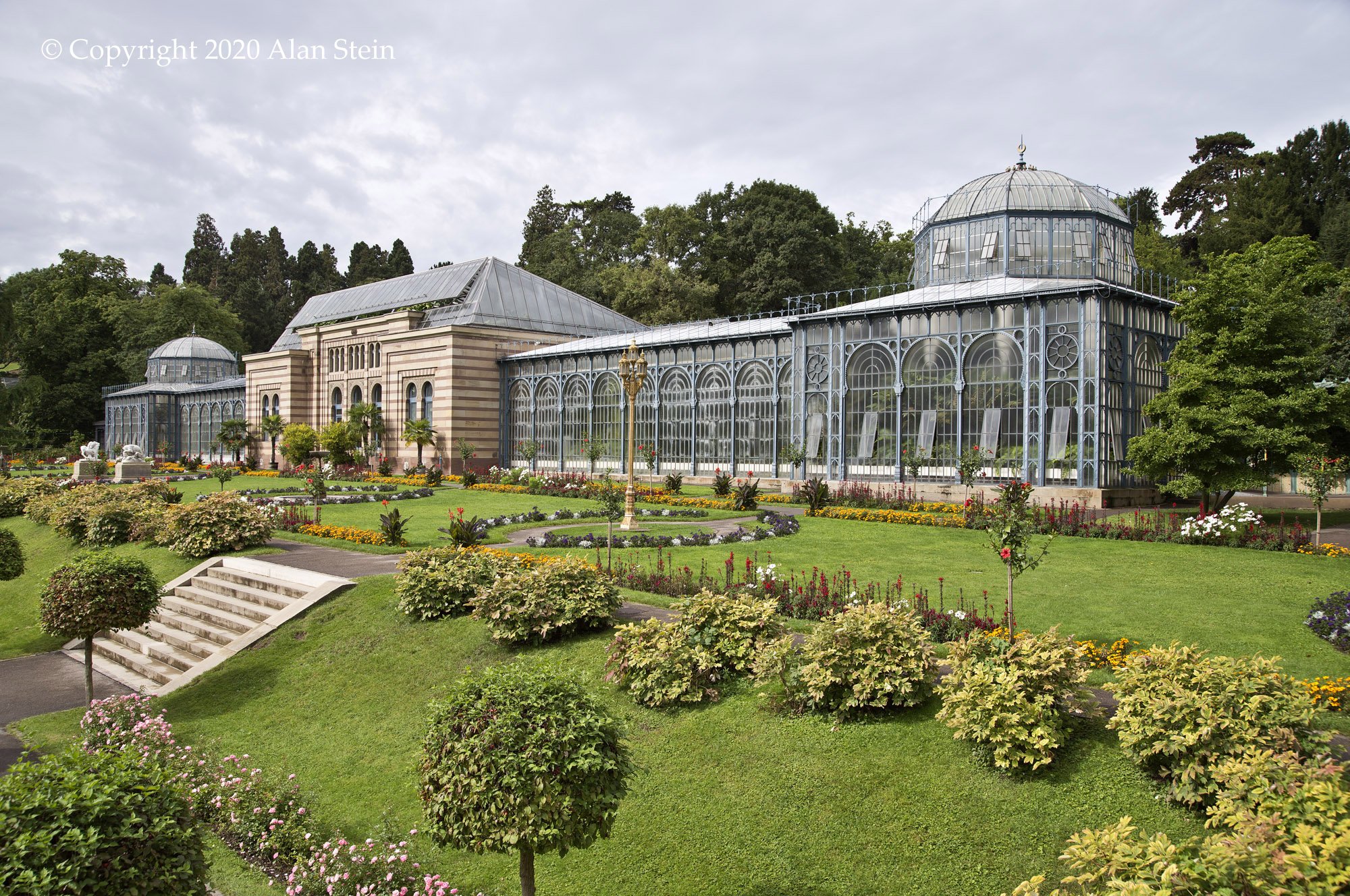
The Conservatory at Wilhelma
Germany, 1846, Architect: Ludwig von Zanth (1796 - 1857)
The royal bathhouse and pleasure garden in what is now Stuttgart, Germany, was to be an extraordinary addition to the palace. Duke William I of Württemberg (1781-1864) entrusted architect Ludwig von Zanth (1796-1857) to design an entire complex in the Moorish style after the famous Alhambra palace in Granada, Spain. At the heart of the gardens was to be a large, exotic orangery at the heart of it, so to study the iron-and-glass structures of the time and how their heating systems worked, Ludwig travelled to England.
Around 1842 the construction of the first buildings began. Zanth oversaw every aspect of the design and fabrication of the cast-iron details at the Wasseralfingen Royal Steelworks. According to Alan and Nancy in their book, The Conservatory: Gardens Under Glass, “Zanth’s masterful application of the Moorish architectural language was received with much acclaim, and after the new buildings and gardens were inaugurated in 1846, he was appointed court architect, a position had sought for many years.”
On September 30th, 1846, Wilhelma was formally opened for the wedding of Crown Prince Karl and the daughter of the Tsar, Olga Nikolajevna but it wasn’t until 1851 with the completion of the Moorish banquet hall that Zanth’s plans for the garden were deemed complete.
Today, the conservatory houses many species of plants from Africa, South America, Asia, Australia and the Canary Islands. According to Wilhelma, “In the central flowerbed selaginella is growing like a lawn; its green carpet lends the room depth and width… Palm trees and the huge edible bananas give everything the character of a tropical garden.”
Photo Credits: Alan Stein

![04_Cons_ch4_015[1B]_copyright.jpg](https://images.squarespace-cdn.com/content/v1/5f11b7e4e3277041fd2580c6/e5945a37-4244-4909-a700-607e674b6384/04_Cons_ch4_015%5B1B%5D_copyright.jpg)
![04_Cons_ch4_016[2B]_copyright.jpg](https://images.squarespace-cdn.com/content/v1/5f11b7e4e3277041fd2580c6/87461b7c-e6ed-41df-b623-f9cb0cd7120b/04_Cons_ch4_016%5B2B%5D_copyright.jpg)
![04_Cons_ch4_017[2B]_copyright.jpg](https://images.squarespace-cdn.com/content/v1/5f11b7e4e3277041fd2580c6/e3a6a8a2-9d68-470f-b742-afae8d07f669/04_Cons_ch4_017%5B2B%5D_copyright.jpg)